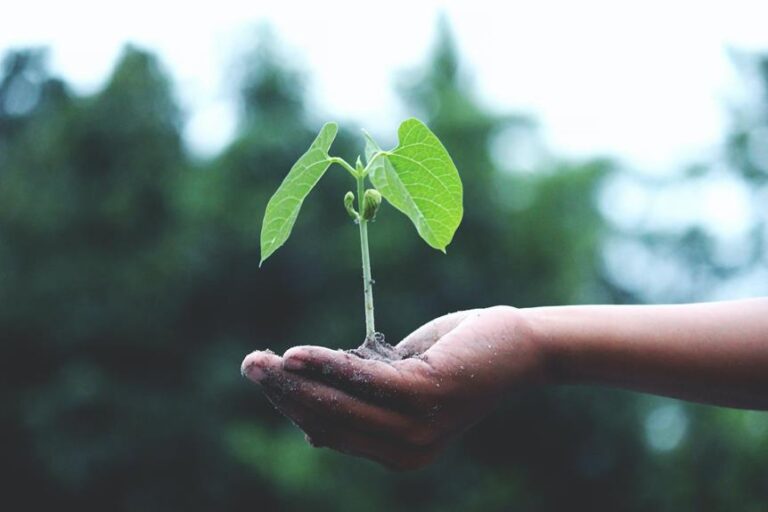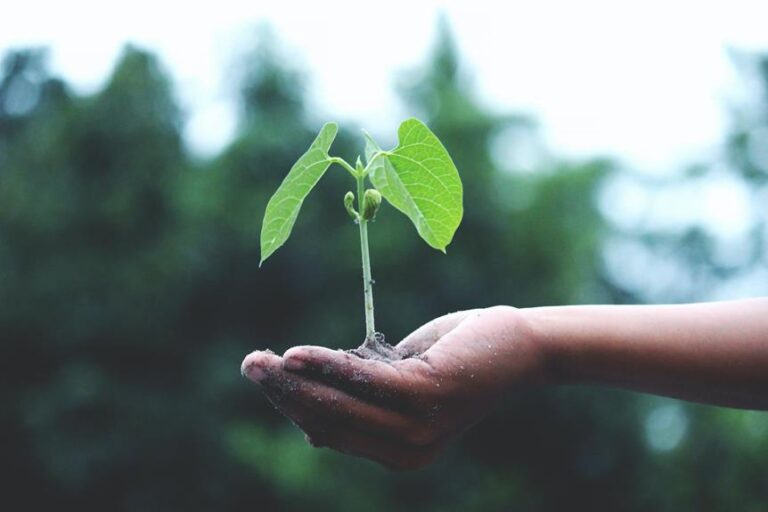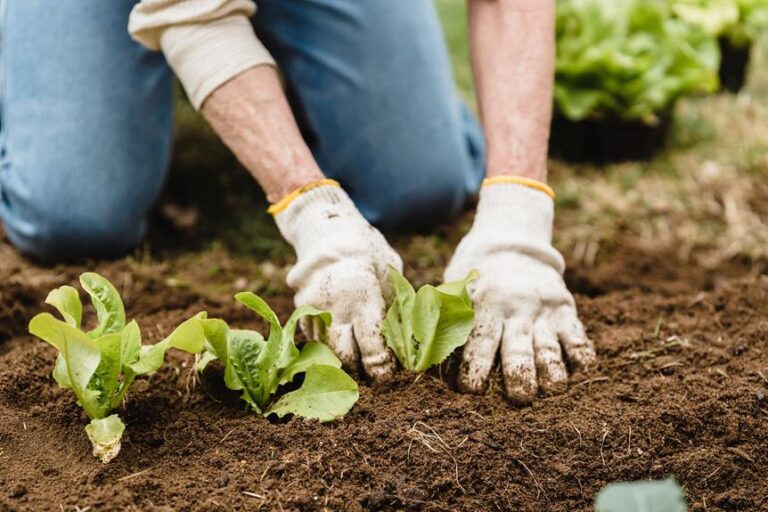Eco-Friendly Gardening: Green Techniques for a Vibrant Garden
Are you ready to transform your garden into a flourishing oasis while also protecting the environment? You’ve come to right place! In this article, we will guide you through the world of eco-friendly gardening.
By implementing sustainable practices, such as improving soil health and conserving water, you can create a thriving garden that supports wildlife and pollinators. Join us on this journey towards a greener and more sustainable future for our gardens and our planet. Let’s grow together!
Takeaways
- Regular soil testing and nutrient management are essential for improving soil health and promoting optimal plant growth.
- Water conservation and non-potable water usage, such as utilizing rainwater and greywater, can minimize water usage and promote environmental sustainability.
- Supporting wildlife and pollinators by creating habitats and using native plants can enhance garden biodiversity and improve fruit and vegetable yields.
- Adopting eco-friendly gardening practices like permaculture, organic pest control, and resource conservation can create a self-sustaining and environmentally friendly garden.
Soil Health Improvement
When it comes to maintaining a thriving garden, one of the key factors to consider is the health of the soil. Healthy soil provides a solid foundation for plants to grow and flourish.
In order to ensure soil health, it’s important to conduct regular soil testing to determine nutrient levels and make informed decisions about nutrient management. Additionally, incorporating organic matter and practicing composting can improve soil structure, fertility, and overall health.
Importance of Healthy Soil
Our garden thrives when we prioritize the health of our soil. Improving fertility is crucial for ensuring that our plants receive the necessary nutrients to grow and flourish. By enhancing the soil structure, we create an environment that allows roots to penetrate easily, improving water and nutrient uptake.
Another essential aspect is nutrient cycling, which involves the conversion of organic matter into nutrients that can be absorbed by plants. This process not only promotes plant growth but also reduces the need for synthetic fertilizers.
Additionally, fostering microbial activity in the soil is vital as microorganisms play a key role in breaking down organic matter and making nutrients available to plants.
Soil Testing and Nutrient Management
To ensure optimal nutrient levels in our garden, we regularly conduct soil testing and carefully manage the nutrients present. Soil testing involves analyzing the nutrient content of the soil to identify any deficiencies or imbalances. This helps us determine the appropriate fertilizer adjustment needed to improve soil quality and promote healthy plant growth.
Nutrient deficiencies can lead to stunted growth, decreased yields, and increased susceptibility to pests and diseases. By addressing these deficiencies through sustainable gardening practices, we can ensure that our plants receive the necessary nutrients for their optimal development. This not only benefits our garden but also contributes to environmental sustainability by minimizing the use of synthetic fertilizers.
Soil testing and nutrient management are essential components of eco-friendly gardening, allowing us to maintain a thriving garden while minimizing our environmental impact.
Organic Matter and Composting
As we focus on organic matter and composting, we can improve the health of our soil through sustainable practices. Composting is an essential aspect of organic waste management and offers numerous benefits for our gardens. By decomposing organic materials such as kitchen scraps, yard waste, and leaves, we create nutrient-rich soil that supports healthy plant growth.
The decomposition process in composting breaks down these materials into humus, a dark, crumbly substance that enriches the soil with essential nutrients. This nutrient-rich soil promotes strong root development, improves water retention, and enhances overall soil structure and fertility.
Incorporating compost into our gardening practices not only reduces the need for chemical fertilizers but also contributes to an eco-friendly gardening by recycling organic waste and minimizing environmental impact.
Water Conservation
Water conservation is a crucial aspect of eco-friendly gardening. By minimizing water usage, we can reduce our impact on the environment and ensure the long-term sustainability of our gardens.
One effective strategy is to use non-potable water sources, such as rainwater or greywater, for irrigation purposes. Additionally, implementing water-wise garden design techniques, such as mulching and proper plant selection, can further optimize water usage and support a thriving garden.
Importance of Water Conservation
We can’t stress enough the importance of conserving water in our gardens. In areas with limited water supply, water conservation becomes even more crucial. Here are three reasons why water conservation is essential for a sustainable garden:
- Water saving techniques: Implementing water-saving techniques such as mulching, using drip irrigation, and watering during cooler hours can significantly reduce water usage in your garden.
- Drought resistance: Conserving water helps your plants develop drought resistance, allowing them to withstand dry periods without suffering from dehydration or stress.
- Water efficient irrigation: Utilizing water-efficient irrigation systems like drip irrigation or soaker hoses ensures that water is delivered directly to the plant roots, minimizing waste.
Non-Potable Water Usage
By utilizing non-potable water sources like rainwater and greywater, we can actively contribute to water conservation in our gardens.
Rainwater harvesting is a simple and effective way to collect and store rainwater for irrigation purposes. Installing a rain barrel or a rainwater harvesting system can capture the rainwater that would otherwise be lost and direct it to your garden.
Greywater recycling is another method that involves reusing water from sources such as sinks, showers, and washing machines. By diverting this water to our gardens, we can reduce our reliance on fresh water sources.
Additionally, implementing water reuse systems and using drought-tolerant plants can further minimize water usage. Water-efficient irrigation methods, such as drip irrigation or soaker hoses, can deliver water directly to the plant roots, minimizing evaporation and waste.
Waterwise Garden Design
Implementing water-efficient irrigation methods, such as using drip irrigation or soaker hoses, allows us to conserve water while still maintaining a thriving garden. By choosing Waterwise plants that are adapted to our local climate and require less water, we can further reduce our water usage.
Xeriscaping techniques, such as mulching and using native plants, can also help conserve water by reducing evaporation and promoting soil moisture retention. Another effective water conservation method is rainwater harvesting, where we collect rainwater in barrels or cisterns to use for watering our plants.
Additionally, reusing greywater from activities like dishwashing or laundry can provide a sustainable source of water for our gardens. These practices not only save water but also help create a more sustainable and resilient garden.
Supporting Wildlife and Pollinators
When it comes to eco-friendly gardening, supporting wildlife and pollinators is essential for a thriving garden.
Creating wildlife habitats, such as birdhouses and butterfly gardens, provides a safe space for creatures to nest and feed. Additionally, attracting pollinators like bees and butterflies helps with the fertilization of plants, leading to better fruit and vegetable yields.
Creating Wildlife Habitats
We can attract a variety of wildlife and pollinators to our garden by providing suitable habitats. Creating a wildlife-friendly garden not only helps support local ecosystems but also adds beauty and interest to our outdoor spaces. Here are three ways we can create wildlife habitats:
- Native plant selection: Planting native species provides food and shelter for local wildlife. Native plants are adapted to the local climate and soil conditions, making them more resilient and attractive to native insects, birds, and other animals.
- Bird-friendly garden: Include bird feeders, birdbaths, and birdhouses to attract and support our feathered friends. Offering a variety of food sources, such as berries, seeds, and nectar-producing flowers, will attract different bird species throughout the year.
- Bee-friendly garden: Planting a variety of flowering plants that bloom at different times of the year provides nectar and pollen for bees. Avoid using pesticides and herbicides that can harm bees and other beneficial insects.
Attracting Pollinators
To attract pollinators, we can create a garden filled with nectar-rich flowers and provide suitable habitats for them to thrive. One important aspect of attracting pollinators is the use of native plants.
Native plants are well adapted to the local environment and provide essential resources for pollinators. When designing our garden, we should consider incorporating a variety of native plants that bloom at different times throughout the year, ensuring a continuous source of nectar.
Flower selection is also crucial in attracting pollinators. Opting for brightly colored flowers with simple, open shapes can attract a wide range of pollinators, including bees, butterflies, and hummingbirds.
Additionally, pollinator-friendly landscaping practices, such as avoiding the use of pesticides and providing water sources, can further enhance the attractiveness of our garden to pollinators.
Beneficial Insect Attraction
In order to support wildlife and pollinators in our garden, we can actively encourage the presence of beneficial insects by providing them with suitable habitats and food sources. Attracting insects to our garden not only helps with pest control methods but also contributes to garden biodiversity.
Here are three ways we can attract beneficial insects:
- Companion planting: By intermixing different plant species, we can create a diverse environment that attracts a variety of insects. For example, planting flowering herbs like dill and cilantro can attract beneficial insects such as hoverflies and parasitic wasps.
- Insect habitats: Providing specific habitats like insect hotels, bee houses, or even leaving dead plant material can offer shelter and nesting sites for beneficial insects. Ladybugs, lacewings, and solitary bees are just a few examples of insects that can benefit from these habitats.
- Food sources: Planting flowering plants that produce nectar and pollen throughout the season can provide a consistent food source for beneficial insects. Consider including plants like sunflowers, lavender, and coneflowers in your garden to attract a wide range of beneficial insects.
Sustainable Gardening Practices
When it comes to eco-friendly gardening practices, there are several key points to consider. One important approach is permaculture gardening, which focuses on creating a self-sustaining ecosystem that mimics natural patterns.
Another aspect is organic pest control, using methods such as companion planting and natural predators to manage pests without harmful chemicals. Additionally, resource conservation is crucial, including practices like Waterwise irrigation and composting to reduce waste and improve soil health.
Lastly, adopting a low-maintenance approach can minimize the use of resources and create a more sustainable garden.
Permaculture Gardening
We frequently incorporate permaculture principles in our gardening practices to create a sustainable and thriving garden. Permaculture design is a holistic approach that focuses on creating self-sufficient and regenerative ecosystems.
One key aspect of permaculture gardening is the establishment of a food forest, which mimics the structure and function of a natural forest to produce a diverse range of edible plants. This not only provides a sustainable source of food but also enhances biodiversity and reduces the need for external inputs.
Companion planting is another technique used in permaculture gardening, where different plants are grown together to create mutually beneficial relationships. This helps improve soil fertility, reduce pest problems, and increase overall productivity.
Lastly, permaculture gardening emphasizes sustainable landscaping practices such as using organic materials, conserving water, and promoting native plant species to create a harmonious and ecologically balanced garden.
Organic Pest Control
Our approach to organic pest control involves implementing eco-friendly gardening practices to keep pests at bay while promoting the health and balance of our garden.
By encouraging the presence of natural predators, such as ladybugs and lacewings, we create a natural pest control system. These beneficial insects feed on common garden pests, helping to keep their populations in check.
Another method we employ is crop rotation, which involves planting different crops in different areas each year. This disrupts the life cycles of pests that target specific plants, reducing their numbers.
Additionally, trap crops are strategically planted to attract pests away from our main crops. These sacrificial plants serve as a lure, protecting our desired plants.
Biological control, such as the use of nematodes or bacteria, can also be employed to target specific pests. Lastly, cultural practices like regular weeding and proper spacing between plants help to prevent pest infestations by reducing their hiding places and limiting their access to vulnerable plants.
Resource Conservation
Let’s explore how implementing sustainable gardening practices can help us conserve resources and create a more eco-friendly garden. By focusing on resource conservation, we can make our gardens more energy efficient and reduce waste.
Here are three key practices to consider:
- Energy Efficiency: Opt for energy-efficient tools and equipment, such as electric-powered tools instead of gas-powered ones. This not only reduces greenhouse gas emissions but also saves energy and reduces noise pollution.
- Waste Reduction: Implement composting to recycle organic waste from your garden, reducing the need for chemical fertilizers and landfill waste. Additionally, consider using mulch to conserve water, suppress weeds, and improve soil health.
- Sustainable Landscaping: Incorporate native plants that require less water and maintenance. These plants are adapted to the local climate, reducing the need for excessive watering and chemicals. Additionally, use permeable materials for pathways and driveways to promote water infiltration and prevent runoff.
Related Post: How to Turn Lawn Into Meadow: Ultimate Sustainable Landscaping.
Low-Maintenance Approach
One key aspect of sustainable gardening is adopting a low-maintenance approach that minimizes the need for constant upkeep and maintenance. This approach involves selecting low maintenance plants and incorporating time-saving techniques to create an efficient garden that requires minimal upkeep.
By choosing plants that are well-suited to the local climate and soil conditions, gardeners can reduce the need for frequent watering, fertilizing, and pest control. Additionally, implementing sustainable landscaping practices, such as mulching and proper plant spacing, can help conserve water and reduce the need for regular weeding.
Designing the garden with efficiency in mind, such as grouping plants with similar care requirements together, can further minimize maintenance tasks.
Related Post: DIY Landscape Design: The Ultimate Guide for Stunning Outdoor Spaces.
Frequently Asked Questions
How Can I Reduce Water Usage in My Garden Without Sacrificing the Health of My Plants?
To reduce water usage in our garden without sacrificing the health of our plants, we can employ conservation techniques such as:
- Drip irrigation or installing rain barrels to collect and reuse water.
- Choosing drought-tolerant plants that require less water.
- Improving soil health through organic composting and using cover crops to help retain moisture.
- Attracting pollinators with native plants and bee houses can aid in plant growth.
- Preventing soil erosion can be achieved through terracing and mulching.
Lastly, creating a wildlife-friendly garden with bird feeders and a butterfly garden promotes biodiversity.
What Are Some Eco-Friendly Alternatives to Chemical Fertilizers for Improving Soil Health?
When considering eco-friendly alternatives to chemical fertilizers for improving soil health, organic composting, cover cropping, crop rotation, mulching, and vermiculture are all effective methods.
These sustainable practices not only nourish the soil, but also reduce the need for synthetic chemicals that harm the environment.
By incorporating these techniques into our gardening routines, we can create a thriving garden while minimizing our impact on the planet. Together, we can cultivate a greener and more sustainable future for our gardens and our world.
How Can I Attract Beneficial Insects and Pollinators to My Garden?
To attract beneficial insects and pollinators to our garden, we can implement a variety of strategies. Creating pollinator habitats by providing nesting sites and water sources is crucial. We can also use eco-friendly pest control methods to avoid harming these important creatures.
Selecting native plants that provide nectar and pollen is another effective way to attract them. Additionally, companion planting with plants that attract beneficial insects can create a welcoming environment. These practices promote biodiversity and contribute to a thriving garden ecosystem.
Are There Any Sustainable Gardening Practices That Can Help Prevent Soil Erosion?
Preventing soil erosion is crucial for maintaining a thriving garden. By implementing sustainable gardening practices, such as mulching techniques, contour farming, soil stabilization, and terracing methods, we can effectively protect our soil.
Mulching helps to retain moisture and prevent runoff, while contour farming and terracing help to slow down the flow of water and reduce erosion. Soil stabilization techniques, such as adding organic matter, help to improve soil structure and reduce erosion.
What Are Some Ways to Create a Wildlife-Friendly Garden That Also Benefits the Local Ecosystem?
Creating a wildlife-friendly garden that benefits the local ecosystem involves several sustainable practices. By providing wildlife habitats with native plants, we can attract and support a variety of species.
Installing bird feeders can attract birds and provide them with a source of food. Rainwater harvesting helps conserve water and provides a natural water source for wildlife. Composting methods can enrich the soil and create a healthy environment for plants and animals.
These practices help create a thriving ecosystem in our garden.
Conclusion
Incorporating eco-friendly practices into our gardening routine can lead to a bountiful and beautiful garden. By improving soil health, conserving water, and supporting wildlife and pollinators, we can create a sustainable environment for our plants to thrive.
These sustainable gardening practices not only benefit our garden but also contribute to a healthier planet. So let’s embrace eco-friendly gardening and watch our garden grow with grace and greenery.







7 Comments
Comments are closed.